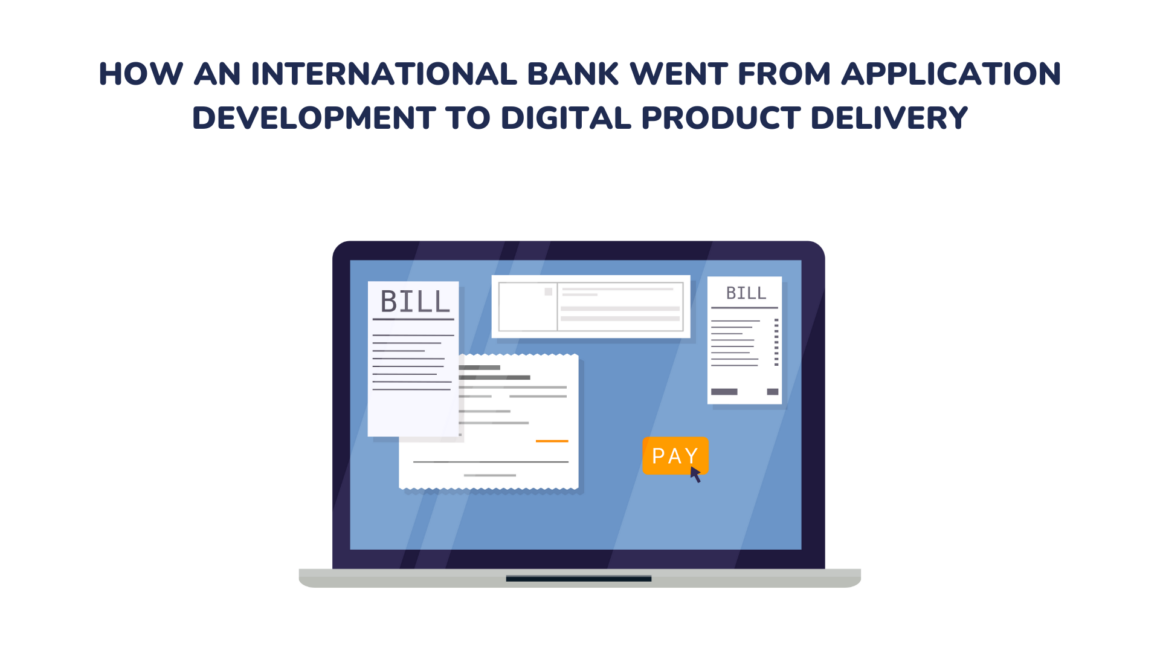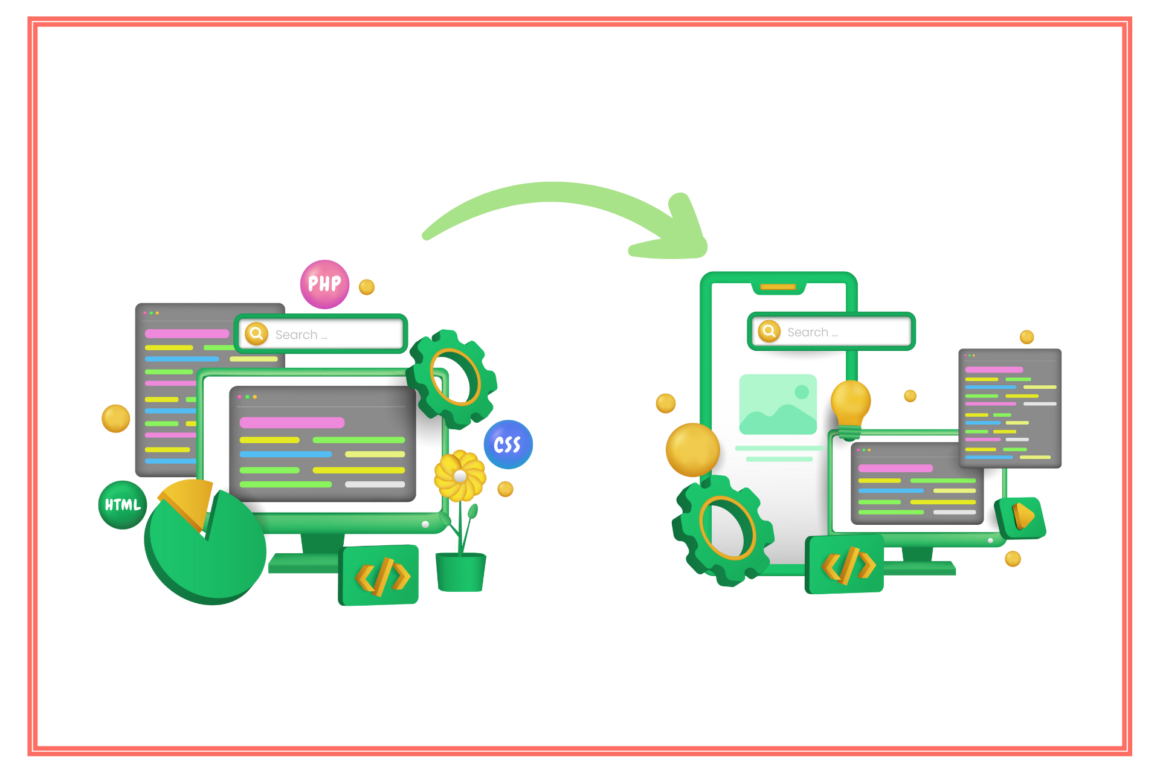In a business world governed by the traditional approach to software development, where solutions are created in-house to solve one-off problems, it’s time to break free from the status quo and shift towards a product ownership mindset. Businesses that want to thrive in this competitive environment must embrace a dynamic and ever-evolving approach to software delivery. By treating software as a product that is continuously developed and improved, companies can keep up with the ever-changing market demands and deliver unparalleled customer experiences.
But what exactly does it take to make the mindset shift from traditional application development to product delivery?
Instead of writing a theoretical blog post about tips and tricks, we think the best way to emphasise the importance of product ownership is through practical examples.
We interviewed one of our clients, a large international bank that wanted to create a web-based application which uses Artificial Intelligence to identify duplicated invoices and eliminate human error and financial loss.
As a background, our client has over 150 years of experience in the banking and finance world and today is one of the leading European financial service groups, supporting over 31 million individuals through their services.
You can find the project case study here.
If you’re ready to take your software development game to the next level and get a practical understanding of shifting the mindset from traditional application development to product delivery, then keep reading.

Q: What was the main reason you needed a custom digital solution as opposed to using an existing solution on the market?
A: We sought to develop a custom digital solution to address the specific issue of payment error detection with greater accuracy than existing conventional tools. Our unique AI engine was designed to provide more effective control of financial leakages and deliver a competitive advantage in the market.
Q: What was the rationale behind the decision of expanding beyond an in-house app, into the product market?
A: The rationale for expanding beyond an in-house app was to capitalize on our innovative AI-driven solution and offer its benefits to a wider customer base. By entering the product market, we aimed to create value for more clients while leveraging their competitive edge.
Q: What mindset aspects had to go through changes in order to accommodate the shift from traditional application development to product delivery?
A: Some mindset aspects that needed change include:
- Adopting a customer-centric approach to ensure the product meets client needs and expectations.
- Embracing a more agile development process that allows for iterative improvements and faster response to market demands.
- Shifting focus from short-term internal goals to long-term product success and market positioning.
Q: What were the business organisational requirements that needed to be consolidated or adapted before making this digital shift? Were there any external resources or knowledge needed?
A: The business organizational requirements that we needed to consolidate or adapt before making the digital shift likely included:
- Adapting our internal structure to support the development and integration of AI-driven technology.
- Allocating resources, such as funding and personnel, for product development and ongoing support.
- Acquiring or developing the necessary technical expertise in AI, machine learning, and web-based platform development.
- Additionally, it appears that we needed external resources and knowledge, as we chose also to search for external providers to develop the platform and the AI module, in addition to the internal capacity.
Q: What are the main benefits of going beyond traditional application development (regular internal software application) into product development?
A: The main benefits include:
- Generating new revenue streams by offering a product to a wider market.
- Establishing a competitive advantage in the industry through innovative technology.
- Enhancing the company’s reputation and brand value by delivering a successful product.
Q: Were there risks involved in the process?
A: Yes, risks involved in the process can include financial risks from investing in product development, potential failure to meet market expectations, and competition from other players in the industry.
Q: What does having a product development mindset mean to you as opposed to traditional app development? And how did your business strategy change?
A: A product development mindset focuses on creating a solution that addresses customer needs, scales to market demands, and provides a competitive advantage. This differs from a traditional app development mindset, which may focus primarily on internal objectives. The business strategy would change to prioritize long-term product success, customer satisfaction, and market positioning.
Q: Do you think that a product mindset creates more customer-centric products? If so, how?
A: A product mindset can lead to more customer-centric products as it emphasizes understanding customer needs and expectations. This approach encourages continuous improvement based on customer feedback, resulting in a product that better meets their requirements and provides greater value.
Q: How did the Fabrit team help with the transition from an internal idea to a market-ready product? What values and assets did they bring to the table?
A: The Fabrit team played a significant role in our journey from an internal idea to a market-ready product. They helped build the platform and integrate the AI module, showcasing their expertise in designing, building, and scaling digital products. Their experience in enabling companies to become business leaders in their markets contributed to the successful development of our solution, which has won a prestigious award in the Business Innovation category.
Q: What were the delivery metrics established with Fabrit Global? How were they met?
A: Based on the new context provided, the delivery metrics with Fabrit Global can be inferred as follows:
- Developing a Minimum Viable Product (MVP) within a 3-month timeframe.
- Implementing the platform for the first customer within an additional 2 months.
Fabrit met these delivery metrics by successfully building the MVP of our platform within the given 3-month period. After refining the platform and addressing any necessary improvements, they were able to implement it for the first customer within the subsequent 2 months.
Q: Do you think that the product created put your company at a competitive advantage? If so, how?
A: The product we created with the help of Fabrit Global has the company at a competitive advantage in the following ways:
- Innovation: Our AI-driven solution is unique and innovative, making it more accurate at identifying payment errors than conventional tools. This innovative approach can help differentiate our business from competitors in the market.
- Improved financial control: our pAID Analytix platform enables company to control payment leakages more effectively, reducing losses due to payment inaccuracies, and potentially increasing overall profitability.
- Customer satisfaction: Our secure, web-based solution can provide a better experience to our customers by improving the accuracy and efficiency of their payment processing. This can lead to higher customer satisfaction and increased customer retention.
- Industry recognition: Our 1st place award in the Business Innovation category at the Romanian ABSL Gala in 2019 demonstrates the value and potential of our solution. This recognition can boost our brand’s reputation and credibility in the market.
Overall, the product we developed has the potential to offer our business a competitive advantage by providing an innovative, effective, and customer-centric solution to address payment inaccuracies and enhance financial control.
In conclusion, shifting from a traditional application development mindset to product delivery requires a fundamental change in approach. Treating software as a continuously evolving product can be the secret to keeping up with the ever-changing market demands and delivering unparalleled customer experiences.
This shift entails adopting a more customer-centric approach, embracing an agile development process, and shifting the focus from short-term internal goals to long-term product success.
While the transition comes with inherent risks, such as financial risks and competition from other players, the benefits of expanding beyond traditional application development into product development include generating new revenue streams, establishing a competitive advantage, and enhancing the company’s reputation and brand value.
Companies can achieve these benefits by partnering with experts such as Fabrit Global, whose experience in designing, building, and scaling digital products can help bring ideas from internal solutions to market-ready products.
Are you ready to upgrade your business process to new digital heights?





